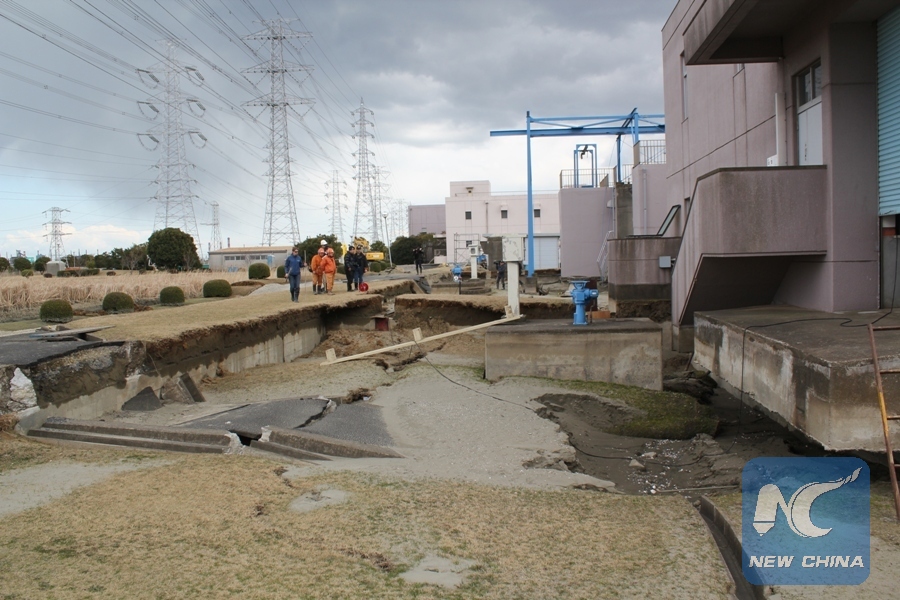
Liquefaction in an subduction zone earthquake could cause entire buildings to sink, as in this picture, if happened in Japan. (courtesy of OSU)
SAN FRANCISCO, June 4 (Xinhua) -- Researchers at Oregon State University (OSU) have created an online tool for homeowners and businesses to better identify the risks they face from a major earthquake anticipated on the Cascadia subduction zone in the U.S. Pacific Northwest.
Known as the Oregon Hazard Explorer for Lifeline Program, or OHELP, the program provides basic information about risks from landslides, ground shaking and liquefaction at specific sites during a subduction zone earthquake, which researchers say could be a massive, regional event that may reach magnitude 9 at some point in the future.
Out from the Cascadia Lifelines Program, launched three years ago and operated by OSU as part of long term preparation against a catastrophic disaster, the program is free to any individual, homeowner, agency, business or industry that wishes to use it.
OHELP can be found online at the web site of the Cascadia Lifelines Program.
"The expected earthquake on the Cascadia subduction zone is going to be the single largest natural disaster ever to face the United States," said Scott Ashford, dean of the OSU College of Engineering and director of the Cascadia Lifelines Program. "This event will likely be so severe, causing billions of dollars in damage, that it's more than just a state or regional concern. It's one we should be preparing for on a national level."
The last earthquake on the Cascadia Subduction Zone occurred in January 1700. Researchers believe a magnitude 8.0 to 9.0 earthquake happens in this region about every 200 to 500 years.
A collaborative effort of OSU and the state of Oregon and U.S. federal government agencies, OHELP can be used with four different scenarios of earthquake magnitude to predict localized impacts, and could help homeowners, hospitals and utility companies to evaluate the threats posed to structures, roads, pipelines, bridges or anything else at risk.
"The good news is that Oregon's state government is now moving in the right direction," Ashford said. "We're starting to retrofit schools, and the awareness of the issue is growing. There's just so much that needs to be done. This is a commitment that will take decades."
About the Cascadia Lifelines Program, he noted that "this has been an exceptionally successful program, and a great example of academia, government and private industry joining forces to tackle a major threat. Many of our stakeholders face common risks, and we're trying to develop joint solutions that can be widely used."
Ashford saw growing involvement of state and federal agencies to build public awareness and response to earthquake risks, such as the Cascadia Rising 2016 drill being organized by the U.S. Federal Emergency Management Agency, to be June 7-10.

